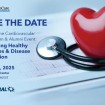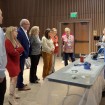UK Study: Amphetamines Don't Improve Motor Recovery After Stroke

A pilot clinical trial exploring the benefit of d-amphetamine combined with physical therapy for stroke patients found no evidence that the regimen improved post-stroke motor recovery.
The results, published in the Aug. 27, 2018 issue of JAMA Neurology, are "another step to better understand an approach that may or may not eventually lead to a new way of improving recovery," said Dr. Larry Goldstein, chair of the University of Kentucky Department of Neurology and the study's lead author.
Amphetamines were first synthesized in 1887 by Romanian chemist Lazar Edeleanu, but it wasn't until the late 1920's that amphetamines were identified as a medically useful mood and energy booster. By World War II, soldiers were using amphetamines to combat fatigue and improve morale; the military routinely distributed the drug to pilots flying long missions. In the 1960's, however, the medical community's enthusiasm for the drug as a safe and popular remedy for depression and fatigue faded.
Two decades later, the question came full circle when Science published the results of a complex, placebo-controlled study demonstrating that rats with brain injuries who were given amphetamines in conjunction with physical therapy showed notable improvement in motor function. Other studies in cats and mice suggested similar improvements.
Since then, the scientific community has worked to extend these successes to humans and further define the parameters for optimal efficacy, e.g. dose, timing/frequency/intensity of physical therapy, but with inconsistent results.
Goldstein et al aimed to further inform the debate. Their study screened 1,665 ischemic stroke patients in five rehabilitation hospitals or inpatient units. Sixty-four participants were randomized to receive either 10 milligrams of d-amphetamine or placebo combined with a one-hour physical therapy session every four days for six sessions, in addition to standard rehabilitation. Treatment began between 10 and 30 days after ischemic stroke.
The primary outcome was defined as a difference in the change in Fugl-Meyer Motor scores, an impairment index assessing motor function, balance and sensation. The study also assessed changes in the National Institutes of Health NIH-Stroke Scale, Canadian Neurological Scale, Action Research Arm test, Rankin Score, Functional Independence Measure, Ambulation Speed and Endurance, Mini Mental State examination, Beck Depression Index and the Stroke Impact Scale as secondary measures. Participants were tested at baseline, the end of treatment and again at three months post-stroke.
Resulting data showed no overall treatment-related difference in Fugl-Meyer Motor scores between baseline and 3-month post-stroke in the two test groups. The two groups were equally comparable on all secondary outcome measures as well, and there was no difference in subgroups based on stroke location or baseline severity.
Goldstein said the next step is to explore other dosing regimens, treatment intervals and times between stroke and beginning treatment — all factors that are important based on animal studies.
"The concept of using amphetamines as part of a regimen for stroke recovery is biologically complex, and this pilot was specifically designed to explore some of that complexity," he said. "This data should help elucidate the parameters for continued study."





